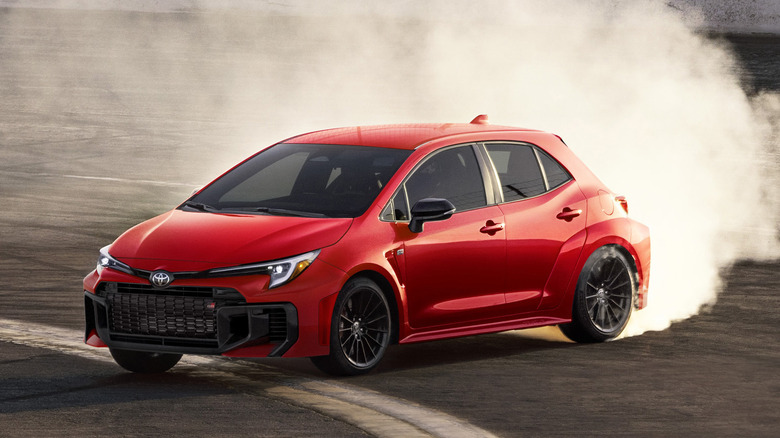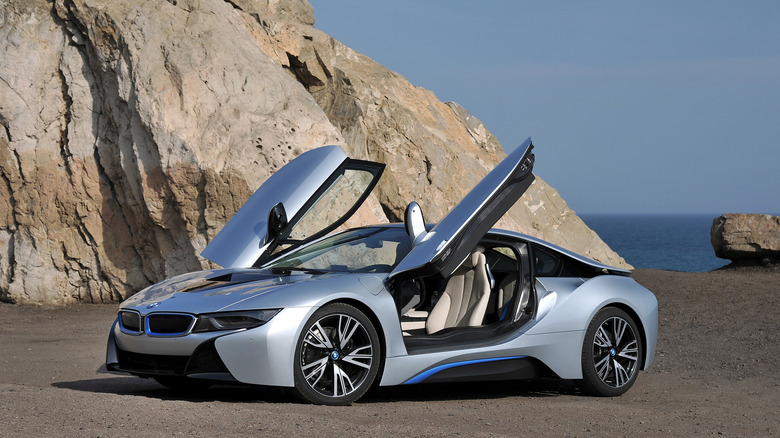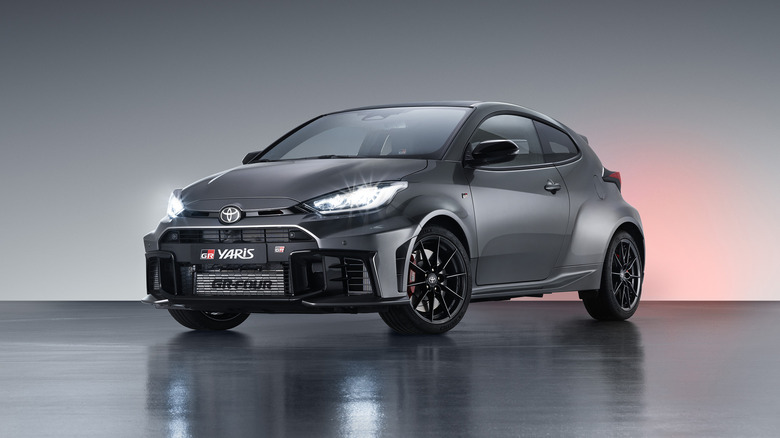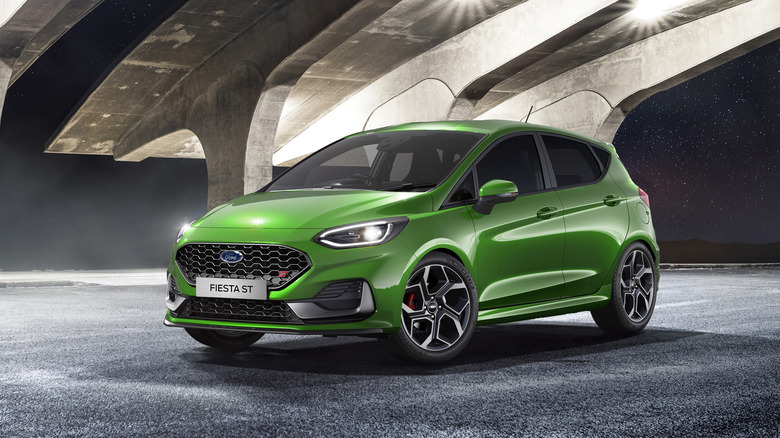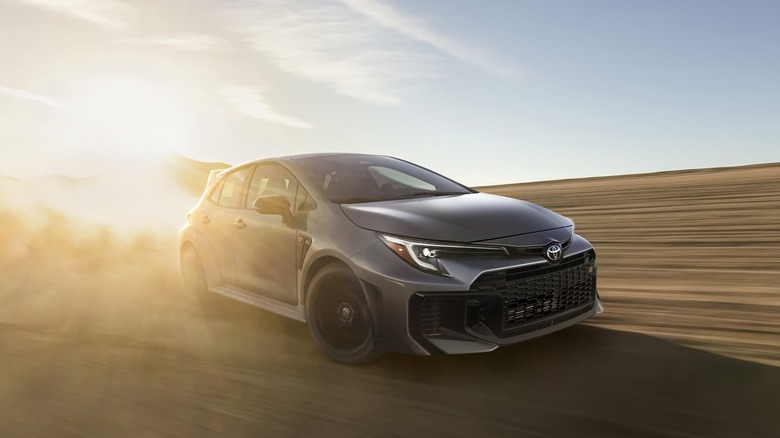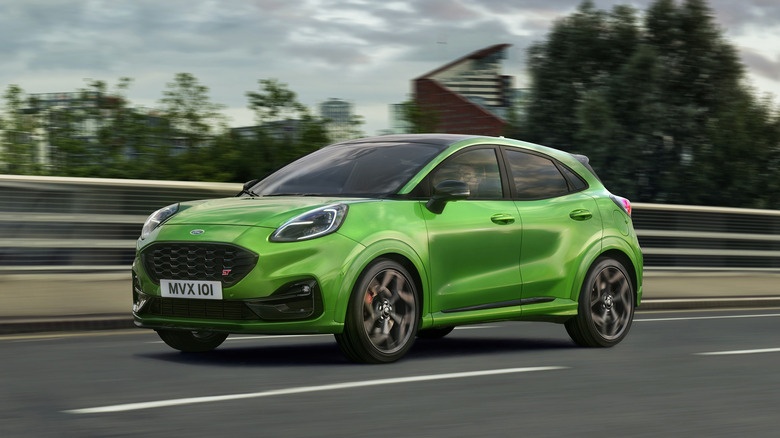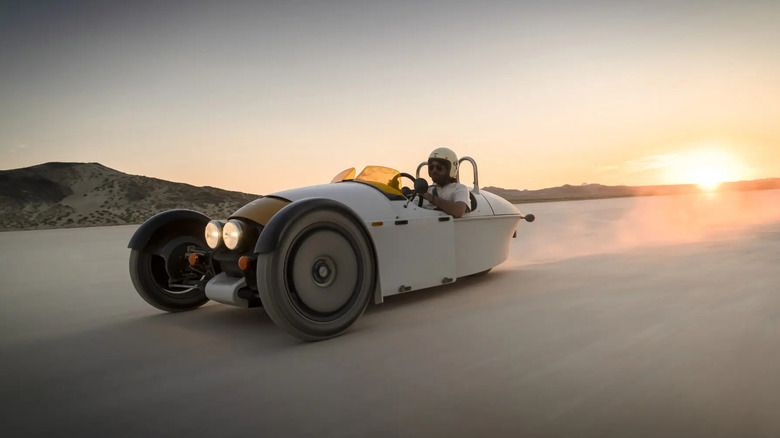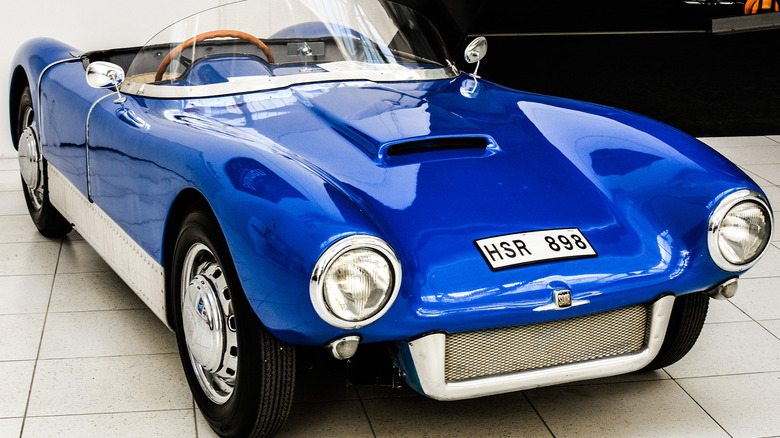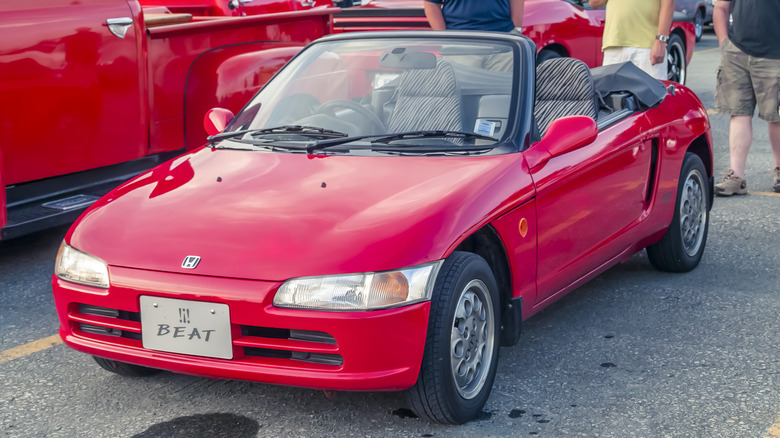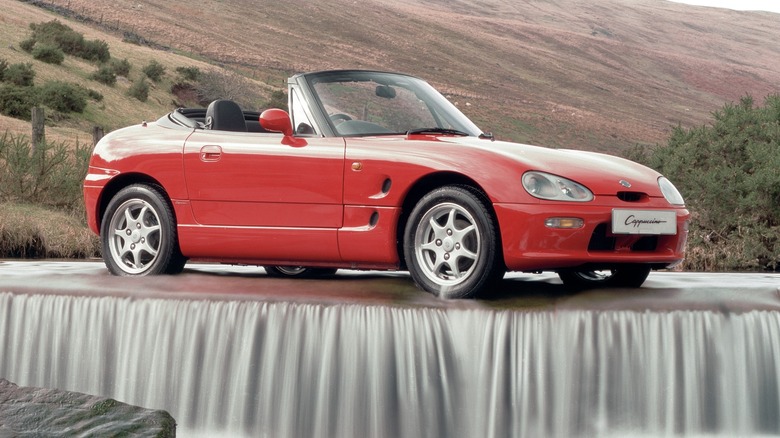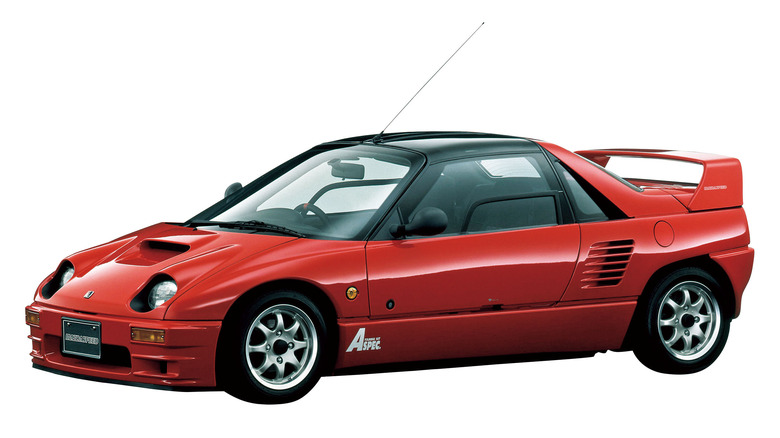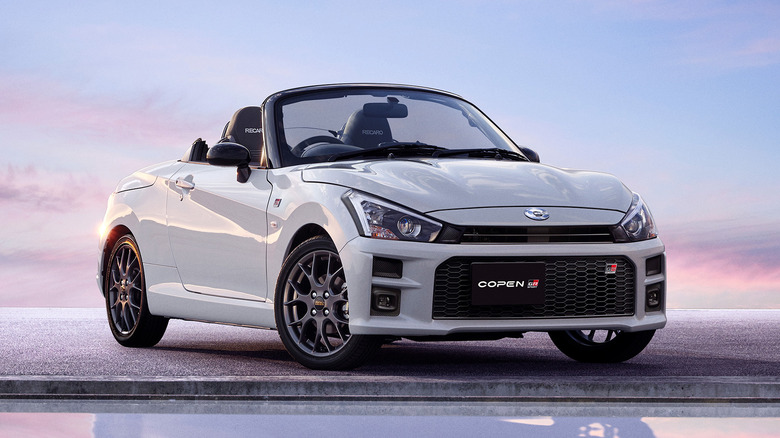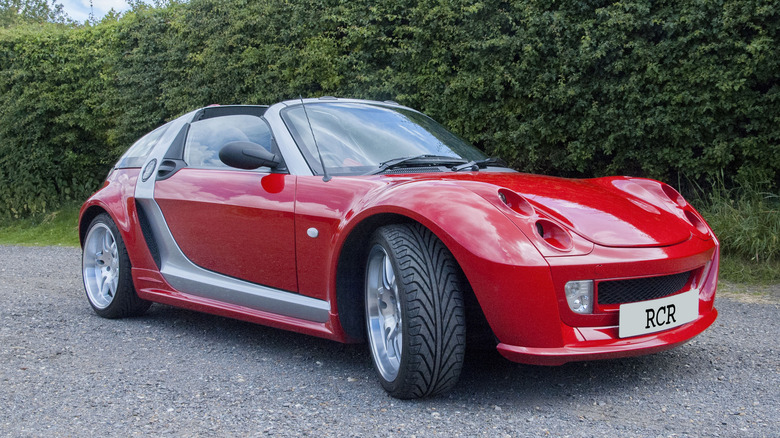12 Cars That Prove 3-Cylinder Engines Can Still Be Sporty
Depending on where you are in the world, sports cars can have anywhere between four and 12 cylinders. But three cylinders in a sports car? That must be unheard of, right? Well, it's not. The recipe has been here for almost seven decades! And, defying conventional wisdom, it gave the automotive world some tasty fun machines.
Not that this should surprise you. Three-cylinder engines are smaller. Less complex. Thus, they could fit inside smaller and cheaper cars. You know what that means? Affordable fun machines! Sure, a V12 Ferrari is a dream car for most kids, but it sadly remains a fantasy for most of us. A quarter-V12 sports car can be a reality for most, though, even today, with companies like Toyota and Ford toying with the three-cylinder performance car concept.
I've been writing about, testing, and reviewing cars for over 15 years, and I always had a soft spot for cheap, attainable sports cars. Recently, the uniqueness of three-cylinder engines, particularly their off-beat sound, urged me to look deeply into sports cars motivated by these tiny machines. There is something for everyone in this segment, including front, rear, and all-wheel-drive cars. So, strap in, because these cars will prove you can have fun with a three-cylinder engine!
BMW i8 (2014 to 2020)
In 2017, colleague Chris Davies called the BMW i8 a 21st-century supercar. His predictions were spot on. Most performance cars today use heavy electrification to boost performance and keep emissions in check. What was innovative a decade ago, is today standard practice across the industry.
And then there is the obvious thing — the i8 is one of the best-looking BMWs ever made, with a futuristic design that still turns heads. It puts to shame today's BMW cars with drama. Scissor doors. Huge body openings with wings for aerodynamics. A keen front end with a regularly sized kidney grille. It's simply gorgeous.
Now, to the powertrain. Yes, most modern supercars are hybrids, but none yet dares to use a three-cylinder gas engine. Yet in 2014, BMW launched this sci-fi thing with a 1.5-liter three-cylinder turbocharged unit, producing 231 hp and 236 lb-ft of torque. Sounds underpowered? Don't worry, BMW also incorporated an 11.6-kWh battery, which powered an electric motor with 143 hp and 184 lb-ft of torque. Together, both produced up to 374 hp and 420 lb-ft of torque and propelled the i8 to 60 mph in 4.2 seconds.
The i8 was a plug-in hybrid, meaning you could also drive it for around 35 miles and at speeds up to 75 mph on electricity alone. Moreover, thanks to its mid-engine layout and low-positioned batteries, the i8 handled beautifully. Sadly, it didn't sell. Maybe it wasn't brash or loud enough. Or too complicated. But it remains a unique proposition that might become a future classic!
Toyota GR Yaris (2020 to Present)
Ever since its launch in 2020, the GR Yaris has been the new flagbearer of three-cylinder sports cars. Based on Gazoo Racing's WRC rally car, the GR Yaris is one of the wildest homologation specials ever made. It's a Yaris, yes, but only shares the front end with the city car. Meanwhile, its rear end is from the Corolla, and it got a haircut to lower the center of gravity. It also has an advanced GR-Four AWD system with two multi-plate clutch Torsen LSDs that allow various torque splits between the axles. The GR Yaris is a truly unique car that we wish was sold in the States.
That's even before we mention the engine because the 1.6-liter three-cylinder turbo is also something special. In 2024, Toyota boosted the tiny unit to 276 hp @ 6,500 rpm and 288 lb-ft of torque available between 3,250 and 4,000 rpm. Moreover, it gave customers the choice of a six-speed manual or an eight-speed direct-shift automatic. As a result, the 2024 GR Yaris sprints to 62 mph in just 5.2 seconds and has a top speed of 142 mph (electronically limited).
Crucially, the refreshed model has a stiffer body, new racing-focused interior, and better visibility, while keeping the weight at 2,822 pounds. Unsurprisingly, according to most publications, the GR Yaris is a riot to drive. Stable, yet playful in the corners, regardless of the weather conditions. Beat that, supercars!
Ford Fiesta ST (2018 to 2023)
Ford actually beat Toyota to the punch in the three-cylinder hot-hatch game. Sure, the Fiesta ST isn't as wild as the GR Yaris, but it has its own merits. For instance, it's only a front-wheel-drive affair, so it weighs less at 2,657 pounds. Thus, its 1.5-liter three-cylinder EcoBoost engine with 197 hp and 236 lb-ft of torque brings it to 62 mph in brisk 6.5 seconds and a top speed of 142 mph. That's impressive for a small car.
If you follow the European automotive landscape, you'll know that Ford's Performance European arm knows how to make fun-to-drive FWD machines. The Fiesta ST is a testament to its prowess. Most publications rave about its agility and adjustability on a twisty road. This hot hatch allows you to drive it the way you want to. It even has a slick-shifting six-speed manual to keep your right hand occupied. Even so, it has a lot of mechanical grip, so track days aren't out of the question. Oh, and that tiny three-cylinder also sounds very characterful — perhaps even better than on the GR Yaris.
It's much more practical than its JDM rival, too. Ford used the four-door body from the standard Fiesta here, so the rear seats are usable, unlike on the GR Yaris. The trunk is significantly bigger, too. Add to that a fantastic 35-mpg fuel economy, and you have the true definition of a pocket rocket.
Toyota GR Corolla (2022 to Present)
North America didn't receive the GR Yaris, but it got the next best thing — a rally-inspired Corolla hatch. For most people, this Gazoo Racing street racer might be more attractive, as it's much more usable, with more space for passengers and a bigger boot. Sure, it's not as unique, but the upgrades still make the GR Corolla the new standard for hot hatches. With its trick GR-Four AWD system, highly boosted three-cylinder engine, six-speed manual, and highly adjustable handling characteristics, the GR Corolla is a blast to drive.
That was our assessment before Toyota further improved the hot hatch for the 2025 model year. It's now available with an eight-speed automatic. Boo, we know. Still, this means that even more people can enjoy Toyota's fun hot hatch. Crucially, the Gazoo Racing team further perfected the suspension, added cooling, and improved aerodynamics. Front and rear LSDs are now standard across the board, too. We'll see how that translates in the real world, but the higher 295 lb-ft of torque will definitely stick you to the seat even harder.
The G16E-GTS 1.6-liter three-cylinder unit still produces 300 hp @6,500 rpm, enough for a 0-60 mph time of around 5 seconds. But perhaps more impressively, it's an engine made to the same standards as the 2JZ-GTE. Toyota uses it in the WRC Rally2 series, so it's a real "made for racing" engine, while tuners are extracting more than 700 hp from the little guy. Sheesh!
Ford Puma ST (2021 to Present)
Now that the Fiesta ST is discontinued, the Puma ST crossover is the next best thing in Ford's lineup. Like with the GR Corolla, it's far more practical than its smaller sibling, with more space for passengers and cargo, though without AWD. Even so, it retains the fun-to-drive characteristics. Journos overseas rave about its handling balance and precision. It's grippy, too, as it rides on specially developed Michelin Pilot Sport 4S tires. Push the Puma ST through Europe's narrow twisty roads, and it will deliver. Just like a real Puma would.
But you are probably here to learn about its three-cylinder engines. Yup — plural. In 2023, Ford made the Puma ST available with a 1.0-liter turbocharged three-cylinder mild-hybrid powertrain. It produces 168 hp and 183 lb-ft of torque, enough for a sprint to 62 mph in 7.4 seconds. Not bad, but if you can sacrifice 2 mpg in fuel economy, the 1.5-liter turbocharged three-cylinder is the exciting engine. With 197 hp and 236 lb-ft, it can reach 62 mph in 6.7 seconds.
Oh, but that's not the whole story. The hybrid is only available with a seven-speed dual-clutch Powershift transmission, while the 1.5-liter with a six-speed manual. The Powershift transmission shifts much faster, meaning the 1.5-liter is even quicker in gear. Should we also remind you that stick shifts are more fun?
Morgan Super 3 (2022 to Present)
Park the Morgan 3 anywhere in the world, and you'll have to forgive people asking whether this is a car. It has only three wheels, shod in bicycle tires. It measures 141 inches long and 72.8 inches wide. Your hands and head will be sticking out of the body. However, the Morgan Super 3 is the antithesis of a modern car. Practicality, safety, and performance take the second stage here. It's all about that driving fun, compromises be damned.
As you'd probably guess, the skinny tires (130-section front, 185-section rear) don't produce much grip. Besides, there are three of them, so you'll be sliding sideways pretty much at any speed. And for that little grip, the Morgan Super 3 is even overpowered, with the 1.5-liter three-cylinder from the Fiesta/Puma, albeit without the turbocharger. It produces 118 hp and 110 lb-ft of torque, enough for a brisk 0-60 mph time of 6.9 seconds, and a top speed of 130 mph. Its stick shift is also quite spectacular.
Even at half its top speed, though, the Super 3 will overfill you with sensations. You sit low in this thing, there is almost no sound insulation and no power steering. So, yeah, you'll need a lot of courage and muscles. And a deep pocket, because the Super 3 costs over $50,000!
Saab Sonett I (1955 to 1957)
With the first five vehicles on this list, we've shown that three-cylinder performance cars can be overpowering. But three cylinders also allow for a more toyish take on the sports car. Enter the Sonnet I, Saab's first-ever sports car. This thing is so tiny that it might get a pass in a toy store. It measures 137.4 inches long, 55.98 inches wide, and just 32.52 inches high. Oh, yes, your head will stick out. Quite significantly.
Yet that's the overarching theme of the Sonett I. It's a car made for driving enjoyment. To have fun. A big part of that is undoubtedly the 748cc three-cylinder, two-stroke engine, which sends 58 hp and 62 lb-ft of torque to the front wheels. This sure sounds underpowered, but the Sonett I was made from an aluminum frame that weighed just 154 pounds. Meanwhile, its body panels were Glassfiber Reinforced Polyester, i.e., fiberglass. As a result, the whole thing weighed 1,102 pounds — as much as one polar bear! This adds to its undeniable charm, doesn't it?
So, although tiny, the three-cylinder was able to propel the Sonett I to 125 mph. Quite impressive for such a small car! In fact, in 1996, the Sonett I broke the Swedish speed record for cars up to 750cc with a speed of 99 mph. Sadly, only six Sonett Is were ever produced, but its legacy lives on in numerous ultra-light three-cylinder Kei machines.
[Featured image by Emilia Raiskio via Wikimedia Commons | Cropped and scaled | CC BY-SA 4.0]
Honda Beat (1991 to 1996)
The JDM-only Honda Beat would be one of the best examples that carried the Saab Sonett I legacy forward. Not only that, but the Kei roadster borrowed the mid-engine, rear-wheel-drive recipe from Honda's first supercar, the NSX. But those weren't the only parts with NSX written all over; the Honda Beat's oddball 656cc naturally-aspirated three-cylinder has individual throttle bodies, and produces 64 hp @8,100 rpm! Impressive considering it lacks turbocharging.
However, the real party piece is the fantastic engine tone, reminiscent of a race car. The Beat might be the best example of a three-cylinder sound, with harmonics that match the NSX's V6 engine. Of course, with that little power and comical 44 lb-ft of torque, the Beat wasn't fast, hitting 60 mph in around 13 seconds. But the Beat isn't about speed. It's about having fun. You can hit the 9,000-rpm limiter on this car everywhere and at any given moment. No track days are necessary.
Let's not forget the mid-engine RWD layout and low 1,675-pound curb weight, which make the Beat an incredibly agile sports car. It might be the closest thing to a street-legal go-kart. Add to that a slick-shifting Honda five-speed manual, and you won't be able to stop grinning while driving the Beat. Only in this case, your grin will appear the moment you look at the baby supercar vibes it gives.
Suzuki Cappuccino (1991 to 1997)
Maybe you are the espresso type, but we promise — this Cappuccino will give you the shivers. Yeah, its engine is housed under the front bonnet, unlike in the Beat, but Suzuki still opted for rear-wheel drive. Crucially, its three-cylinder 657cc engine is turbocharged. So, although it has the same 64 hp figure as the Beat — the maximum allowed for a Kei car, the Cappuccino has 62 lb-ft of torque. Oh, and because it also has an intercooler from the factory, tuning it to 120 hp is an easy-peasy job.
As you'd expect, the Cappuccino doesn't sound as exciting as the Honda Beat. It's also not as thrilling to look at. But if you want more power, this is the way to go. It weighs less than 1,600 pounds, so you won't need to overwork the engine too much to keep up with bigger sports cars. The official factory 0-60 figure is 8 seconds, so you could imagine what doubling the power could do.
Still, like with every Kei sports car, it's all about the experience. The lightness of the chassis also benefits the handling, with the tiny dimensions helping you position the Cappuccino anywhere you want in the corner — even on tight, twisty roads.
Autozam AZ-1 (1992 to 1994)
The AZ-1 borrows what's great from the Honda Beat and Suzuki Cappuccino, and sprinkles it with exotic spice. This unique Kei car from Mazda's defunct sub-brand Autozam offers many cool and unique features, such as gullwing doors, a mid-engine RWD layout, and catchy looks. So, unlike its rivals, the AZ-1 has an Italian supercar vibe, albeit in a tiny package.
In the middle, the Autozam AZ-1 has the same turbocharged three-cylinder engine as the Cappuccino, meaning it produces 64 hp and 62 lb-ft of torque. It's mated to a five-speed manual and needs to carry less than 1,600 pounds of curb weight. So, as you'd expect, it's equally fun to drive as its Kei rivals, and pretty quick too. Also, since it's turbocharged and intercooled from the factory, tuning the 657cc engine to over 100 hp shouldn't be hard.
However, everything pales in comparison to the visual drama of the Autozam AZ-1. Yes, the gullwing doors are the headline act, but Mazda also got the proportions right. Furthermore, the big rear spoiler and Ferrari-esque side vents add aggressiveness to that cute, frog-eye face. Even so, that wasn't enough for good sales, as the price was also too high for a Kei car. In the end, Autozam produced less than 4,500 units. But this only adds to the AZ-1's exotic aura and makes it a valuable classic.
Daihatsu/Toyota Copen GR Sport (2014 to Present)
Daihatsu, mainly known for its small city cars, also wanted a piece of the Kei roadster pie. So, in 2002, it introduced the Copen roadster, which stands for Compact and Open. It was a quirky-looking, bug-eyed toy car with — you guessed it, a tiny 659cc turbocharged three-cylinder engine. Unlike its rivals, though, Daihatsu also launched the Copen in Europe, albeit with a larger 1.3-liter naturally-aspirated unit producing 87 hp.
Fast forward to 2014, Daihatsu launched an improved Copen, with a much more aggressive styling. The engine remained the same, and so did the front-wheel-drive layout. This sure makes the Copen less interesting than its rivals, but it has an ace up its sleeve — a Gazoo Racing improved version. Yup, since Toyota owns Daihatsu, it sells a GR Sport variant of the tiny roadster in its dealerships.
The Copen GR Sport still makes 64 hp, because the Kei regulations wouldn't allow for more. Still, the hardcore version has quite a few improvements, like Recaro seats, performance shock absorbers, re-tuned power steering, front and center bracing, and a front limited-slip differential. Like the regular model, the GR Sport is available with a five-speed manual and a CVT, but you know already which one we'd go for. Unfortunately, the quirky Copen GR Sport is a Japan-only affair.
Smart Roadster (2002 to 2005)
Japan was the only place where you could get Kei fun machines until the turn of the millennium when Smart introduced the Roadster. This quirky-looking sports car has "Kei" written all over it. In the middle, it packs a tiny 698cc three-cylinder turbocharged engine and measures 134.9 inches long. The Smart Roadster also weighs just 1,742 pounds, which, along with the mid-engine RWD layout, allows for a very agile and balanced handling.
Unlike its Kei rivals, the Roadster was also available as a coupe. Confusingly, Smart called it the Roadster Coupe, even though it has a shooting brake rear end. The closed-top also has 80 hp, or 20 hp more than the topless version, so that's the one to get if you worry about performance. With a 0-62 mph time of 10.9 seconds, it's not a rocket, but that's largely due to its slow-shifting six-speed automated manual transmission. At the time, these flappy-paddle gearboxes were seen as futuristic, but from today's standpoint, Smart should've probably used a good old manual. Brabus fortunately made a 100-hp version that reached 62 mph in 9.8 seconds, but it still had the clunky six-speed automated gearbox.
[Featured image by SurfaceAgentX2Zero via Wikimedia Commons | Cropped and scaled | CC BY-SA 4.0]
